Transport staples in need of funding
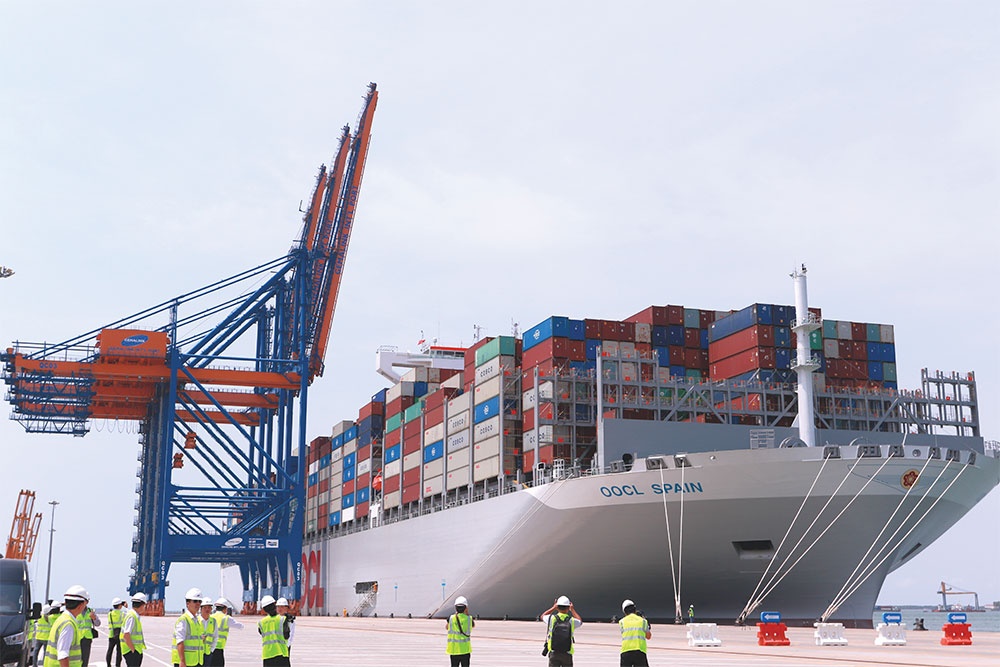 |
| Cooperation between seaport operators is opening the door for more and bigger ships to dock in Vietnam, photo Le Toan |
In late April, seaport operators TCTT and CMIT got the green light from the Ministry of Transport (MoT) to study a cooperation plan to develop a 1,200-metre long berth for mutual operation in the Cai Mep-Thi Vai area of the southern province of Ba Ria-Vung Tau.
Nguyen Xuan Ky, deputy general director of CMIT, told VIR, “This means a lot to our collaborative project and is an important premise for us to continue to implement the next steps. Cooperation between CMIT and TCTT will bring better solutions for shipping lines, importers, and exporters in terms of berth flexibility, increased service quality, promoting business strengths of each, and meeting market demand.”
In recent years, the Cai Mep Port area reported two-digit growth rate in throughputs. The number of mother ships docked at Cai Mep ports reached 33 per week, of which CMIT and TCTT received 14 weekly. The cooperation will enable CMIT to receive more ships at the same time.
The size of ships docking at Cai Mep is increasing, with length up to 400m and expected to be even larger in the coming years as planned by shipping lines. At the same time, shipping lines have a great need to connect goods with one another.
While studied by units of Ho Chi Minh City authorities, with plans expected to be sent to authorised agencies for approval imminently, the Can Gio international transhipment port project has also received strong attention from some investors.
In a document sent to the Ministry of Planning and Investment and the Ministry of Transport in late 2022, Vietnam Maritime Corporation (VIMC) said it will cooperate with Mediterranean Shipping Company (MSC) and member company Terminal Investment in developing Can Gio Port.
Nguyen Canh Tinh, CEO of VIMC, said, “In addition to the capital contribution and long-term experience in port management and operation, MSC will carry the volume of international transshipment goods from countries in the region to the international transshipment port in Vietnam. This is an extremely important factor to ensure the successful implementation of the project.”
Other multinationals are interested in seaports in Vietnam. At a meeting with Vietnamese Prime Minister Pham Minh Chinh on May 24, Karan Adani, CEO of Adani Ports and SEZ Ltd. (APSEZ) from India said that the group spent time exploring opportunities in Vietnam and decided to make a long-term commitment in the country, not only in ports and logistics but also in energy and digital technology.
“We aim to build an eco-friendly and green port ecosystem and invest in wind and solar power plants in Vietnam with total capital of about $3 billion in accordance with the country’s development strategy,” Adani said.
That same week, APSEZ held a working session with Saigon Port JSC on business opportunities. The Indian group also signed an MoU with VIMC on seaports and logistics development.
Last year, APSEZ announced that the central city of Danang will be the starting point for Adani in Vietnam, and it committed to close cooperation with local authorities and the government to support the development of Lien Chieu Port along with the entire logistics area and industrial park in Danang.
Meanwhile, BRG and Sumitomo are also working with local authorities on Lien Chieu Port development in order to transform it into an international seaport.
Seaports lead the way
Seaports have been the most attractive part of Vietnam’s transport sector in recent decades, thanks to the ability to control the source of income. The country attracted more than $1.5 billion worth of foreign capital into joint venture projects for the construction and operation of deepwater container ports at Thi Vai and Cai Mep in the late 2000s and early 2010s.
Renowned investors contributing to the successful development of the deepwater container terminal cluster from the initial stages include PSA, APMT, SSA Marine, Saigon NewPort, Vinalines, and others. There are also many large general-purpose and specialised seaport projects invested by Vietnamese companies and foreign-invested enterprises.
In the north, a deepwater container port area at Lach Huyen was also planned. The first two berths of Haiphong International Container Terminal, a joint venture between Saigon Port Corporation and a number of international container shipping lines, were successfully put into operation in 2018.
In early 2021, a joint venture between Gemadept Group and CMA-CGM shipping company put into operation Gemalink Port, adding much-needed capacity to the deepwater container terminal complex at Cai Mep.
In addition to seaports, logistics is also attractive to foreign investors. The presence of investors from Japan, South Korea, Denmark, and others in large logistics joint ventures is one of the key factors to improving the World Bank’s Logistics Performance Index of Vietnam.
According to the Vietnam Logistics Business Association, there are many joint ventures taking shape, such as Vietfracht Vietnam with Neptune Orient Line Singapore, and Vinalines Vietnam with CGM of France.
Besides that, there are investments in the development of warehouses and means of transport, and logistics service centres. For example, Vietnam’s T&T Group and Singapore’s YCH Group are jointly working on a project to develop an inland container depot logistics centre in northern province of Vinh Phuc.
While seaports maintain their attraction to private investment, railway and aviation have found it hard to do the same.
According to Bui Doan Ne, deputy chairman of the Vietnam Aviation Business Association, foreign investment in the aviation sector has not yet met expectations due to a number of reasons. Funding in the sector requires large capital with a long investment return period, while efficiency is lower than many other sectors. Therefore, both domestic and foreign investors are quite cautious.
“The regulations on conditional business lines and high risks of business activities in the aviation sector, especially the serious decline due to the pandemic, are other barriers hindering domestic and foreign private inflows into the sector,” Ne added, explaining that according to current regulations, the rate of capital contribution in air transport enterprises for foreign investors is 34 per cent.
Segments still stuck
In railways, the situation has been similar to aviation. After eight years of interest, South Korea’s Lotte E&C in April announced the suspension of the Yen Vien-Lao Cai railway upgrade phase 2 and building a railway connecting Lao Cai-Ha Khau in the public-private partnership (PPP) model. Lotte E&C blamed the move for the fact that the two projects are not currently on the national priority list.
East Japan Railway Company, Japan’s largest rail operator, has expressed interest to the MoT about upgrading and renovating the Hanoi-Haiphong railway line, as well as building the route to Haiphong Port. However, the path may not be easy because of a number of issues.
According to the Vietnam Railway Administration (VRA), the biggest barrier to rail funding is that projects require huge capital but generate low profits, coupled with a lack of guidance on incentives.
Dang Sy Manh, general director of the country’s railway giant Vietnam Railways, added, “Although we want to cooperate with international partners in projects to upgrade the existing routes and build new ones linking to economic zones, legal barriers prevent this.”
In late April, the plan for development of the railway network this decade and beyond was approved in which the country will issue a list of projects calling for investment, expecting to create a period of new investment inflows into the railway sector.
In the road segment, according to the Vietnam Association of Road Systems Investors (VARSI), there have been no foreign investors directly involved in build-operate-transfer transport projects. To date, a number of them have participated, but through the acquisition of shares of a number of Vietnamese companies funding such projects.
The MoT has made administrative reform and called for foreign investors in transport ventures in Vietnam. It announced bidding for international investors for the construction of Ring Road 3 in Ho Chi Minh City and the section of Tan Van-Nhon Trach, with the mechanism and policies in line with existing regulations.
However, various investors decided not to participate because the risk allocation mechanism was not reasonable in terms of low profits, bearing the cost of site clearance, the risk of unsecured revenues, and more besides.
The MoT made strong efforts in the issuance of the law on PPP investment in 2020, pinning high hopes on a full and comprehensive legal framework for transport projects under the PPP model. However, few related projects have been implemented since then.
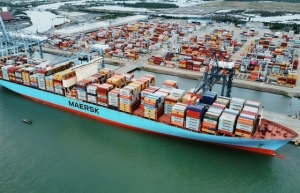 | More private capital required for seaports A downturn in exports may prompt the private sector to reevaluate its investment plans in the nation’s seaports, which are estimated to require over $13 billion by 2030. |
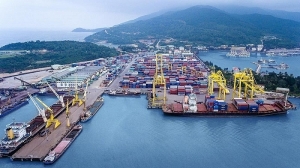 | India's Adani Group proposes $2 billion seaport in Vietnam The Indian-based conglomerate Adani Group has proposed developing a $2 billion seaport in Vietnam, while also investing in wind and solar power plants. |
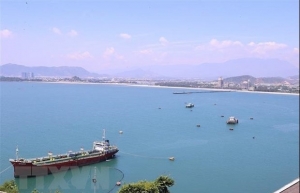 | Da Nang aims to become attractive logistics centre by 2030 The central city of Da Nang targets to become an attractive logistics centre of the central key economic region by 2030, and the key gateway of the East-West Economic Corridor and an important link of the Asia-Pacific transport corridor by 2050. |
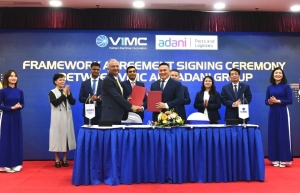 | VIMC, Adani cooperate on seaport development Vietnam Maritime Corporation (VIMC) and India’s Adani Ports and SEZ Ltd. (APSEZ) on May 24 signed an MoU to cooperate in seaports and logistics development. |
What the stars mean:
★ Poor ★ ★ Promising ★★★ Good ★★★★ Very good ★★★★★ Exceptional
Related Contents
Latest News
More News
- GE Vernova powers up Vietnam with first 9HA gas power plant in the country (January 06, 2026 | 16:54)
- Solid finish for manufacturing after volatile year (January 06, 2026 | 08:50)
- Meiko strengthens Vietnam operations with new PCB plants (January 06, 2026 | 08:49)
- Ho Chi Minh City backs $2 billion AI data centre with dedicated task force (January 06, 2026 | 08:43)
- PM sets January deadline for high-speed rail consultant (January 06, 2026 | 08:40)
- New decree spurs on PPP implementation (December 31, 2025 | 19:01)
- Global alliance develops $1 billion AI data centre network in Vietnam (December 30, 2025 | 10:08)
- Standing out in the Chinese outbound investment wave (December 29, 2025 | 10:29)
- Bright spots obvious in foreign investment mission (December 29, 2025 | 09:00)
- Ho Chi Minh City hits $8.37 billion in FDI (December 29, 2025 | 08:28)

 Tag:
Tag:




















 Mobile Version
Mobile Version